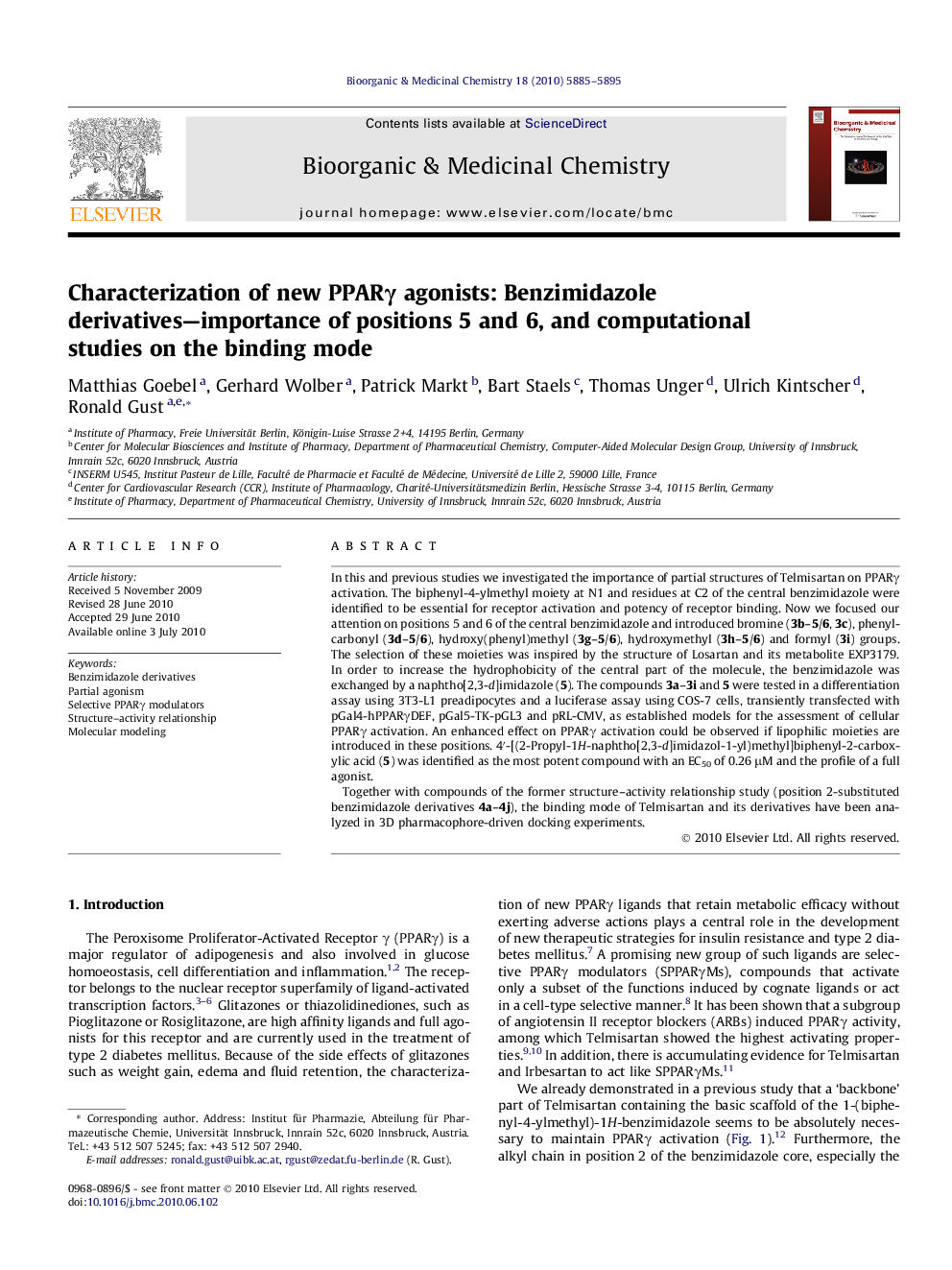| کد مقاله | کد نشریه | سال انتشار | مقاله انگلیسی | نسخه تمام متن |
|---|---|---|---|---|
| 1359056 | 981380 | 2010 | 11 صفحه PDF | دانلود رایگان |

In this and previous studies we investigated the importance of partial structures of Telmisartan on PPARγ activation. The biphenyl-4-ylmethyl moiety at N1 and residues at C2 of the central benzimidazole were identified to be essential for receptor activation and potency of receptor binding. Now we focused our attention on positions 5 and 6 of the central benzimidazole and introduced bromine (3b–5/6, 3c), phenylcarbonyl (3d–5/6), hydroxy(phenyl)methyl (3g–5/6), hydroxymethyl (3h–5/6) and formyl (3i) groups. The selection of these moieties was inspired by the structure of Losartan and its metabolite EXP3179. In order to increase the hydrophobicity of the central part of the molecule, the benzimidazole was exchanged by a naphtho[2,3-d]imidazole (5). The compounds 3a–3i and 5 were tested in a differentiation assay using 3T3-L1 preadipocytes and a luciferase assay using COS-7 cells, transiently transfected with pGal4-hPPARγDEF, pGal5-TK-pGL3 and pRL-CMV, as established models for the assessment of cellular PPARγ activation. An enhanced effect on PPARγ activation could be observed if lipophilic moieties are introduced in these positions. 4′-[(2-Propyl-1H-naphtho[2,3-d]imidazol-1-yl)methyl]biphenyl-2-carboxylic acid (5) was identified as the most potent compound with an EC50 of 0.26 μM and the profile of a full agonist.Together with compounds of the former structure–activity relationship study (position 2-substituted benzimidazole derivatives 4a–4j), the binding mode of Telmisartan and its derivatives have been analyzed in 3D pharmacophore-driven docking experiments.
Telmisartan originally designed as AT1 antagonist, showed properties of a selective PPARγ modulator. Therefore, we evaluated the parts of the molecule essential for activation and analyzed the structures in 3D pharmacophore-driven docking experiments.Figure optionsDownload as PowerPoint slide
Journal: Bioorganic & Medicinal Chemistry - Volume 18, Issue 16, 15 August 2010, Pages 5885–5895